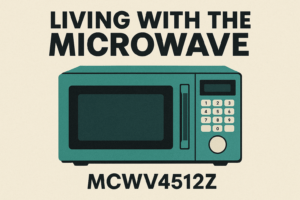Apple’s iPhone 16e is a landmark with the debut of the Apple C1 modem, Apple’s first proprietary cellular modem. The decision marks Apple’s strategic direction towards gaining more control over its hardware pieces in order to provide better performance and user experience. In this piece, we look at the design objectives, performance in real life, and what the C1 modem in the iPhone 16e means.
Apple’s Move to In-House Modems
Apple has also traditionally utilized third-party suppliers like Qualcomm for modem chips. Utilizing the C1 modem in the iPhone 16e is Apple’s step towards more integrated hardware and software, which should translate to more efficiency and performance. This is in keeping with Apple’s general strategy of vertical integration, where more specialized and optimized components would be utilized in its devices.
Objectives of C1 Modem Design
Apple’s fundamental goal with the C1 modem was to create an efficiency-driven component that offers good connectivity while not compromising on battery life. Energy efficiency is the top priority, as modern smartphones require robust performance with the preservation of long battery life. The combination of the C1 modem with Apple’s A18 chip and iOS ecosystem aims to fulfill this need, enabling smooth performance and customer satisfaction.
Real-World Performance
Early testing and user feedback provide valuable information about the C1 modem’s performance:
Connectivity: The iPhone 16e with the C1 modem shows connectivity performance on par with the iPhone 16, with Qualcomm’s modem. Both devices showed comparable speed and reliability in lab tests, which means that the C1 modem is industry-par today.
9TO5MAC.COM
Power Efficiency: Another of the most impressive features of the C1 modem is its enhanced power efficiency. Apple has engineered it to consume significantly less power for transmitting data, reducing the overall power drain on the battery.
Battery Life: The iPhone 16e’s up to 26-hour video playback rating is indicative of early testing where the iPhone 16e with the C1 modem has longer standby and better daily use than earlier models. Consumers who spend extended periods of time streaming video, using social media, or video calling have seen significant battery life improvements.
Signal Stability & 5G Performance: Not the fastest modem to be sure, the C1 provides a stable and consistent link in most network conditions. But it doesn’t have mmWave 5G support, so users in markets that utilize mmWave networks may see slightly slower peak download speeds than those who possess Qualcomm-based iPhones.
Comparison with Qualcomm Modems
Apple’s decision to create an in-house modem naturally invites comparison with Qualcomm’s Snapdragon X70 and X75 modems powering vanilla iPhone 16 and other premium Android devices.
Download & Upload Speeds: Benchmarks indicate that the C1 modem is almost as fast as Qualcomm’s 5G modems for sub-6GHz bands, which serve the majority of the globe’s 5G territories.
Signal Strength: The C1 modem performs slightly worse under circumstances of low signal strength, for example, underground or rural areas, but is significantly above average in urban settings.
Efficiency Enhancements: Apple has tuned the C1 modem to be more efficient within the company’s own hardware ecosystem, with less heat and better power management issues. What This Means for Apple’s Future
The release of the C1 modem is only the start of Apple’s move away from third-party modem manufacturers such as Qualcomm. Although the iPhone 16e is a testing ground, subsequent iPhones, iPads, and even MacBooks can integrate better iterations of Apple’s in-house modem.Potential Software Enhancements: Apple will be releasing firmware upgrades that will further enhance modem performance. Next-Generation Modems: The C2 modem, which will be seen on iPhone 17 devices, could introduce mmWave 5G support and enhanced AI-driven network management.
Impact on Qualcomm: If Apple can eliminate Qualcomm modems, then that can upset the 5G modem market, with Qualcomm having to innovate quicker in a bid to catch up.
Conclusion
Apple C1 modem in iPhone 16e is a step in the right direction towards being totally modem-independent. Not yet a better option in all areas as of today compared to Qualcomm but still offering great connectivity, excellent power efficiency, and seamless integration with Apple’s ecosystem. As Apple continues to advance the modem technology, the future devices will likely provide even better performance, better battery life, and more network optimization control—a situation where Apple benefits and so does the consumer.




